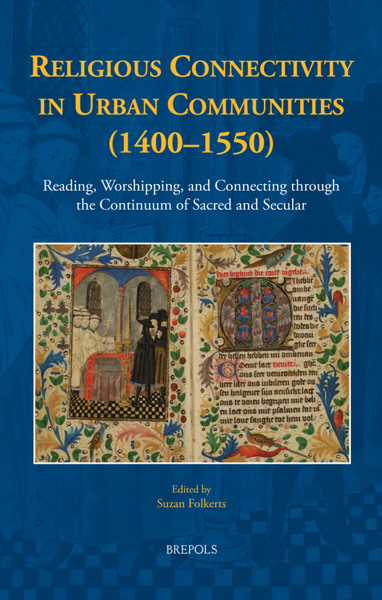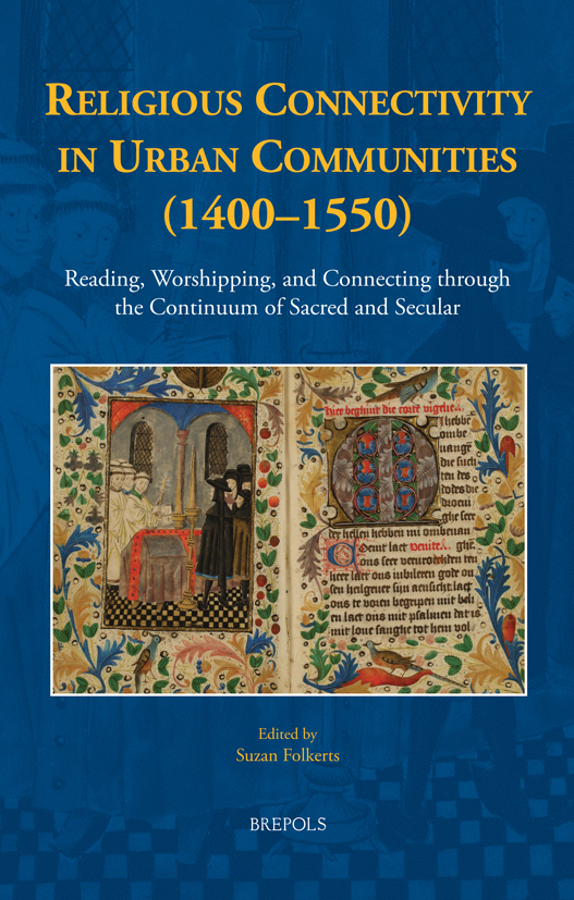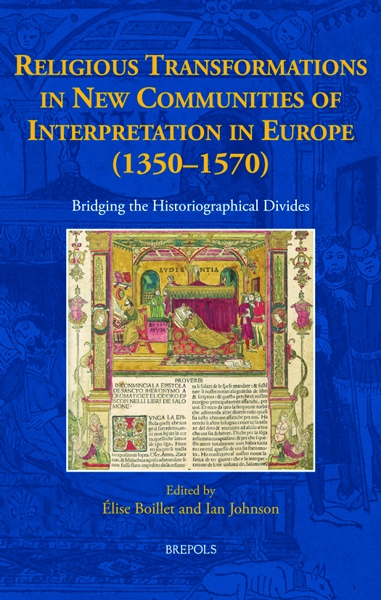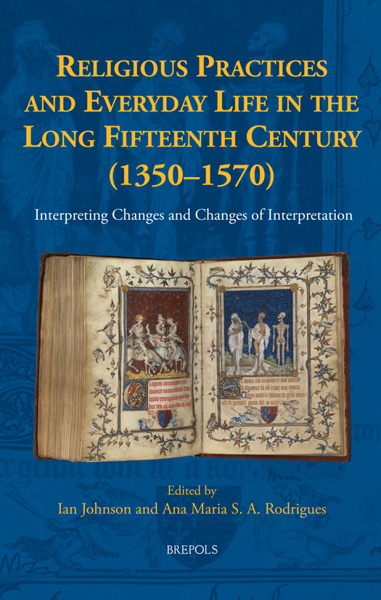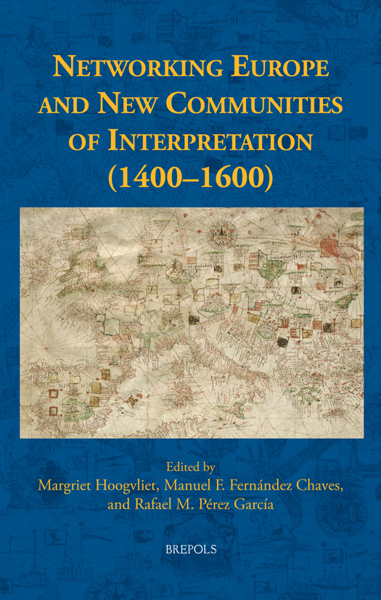
Religious Connectivity in Urban Communities (1400-1550)
Reading, Worshipping, and Connecting through the Continuum of Sacred and Secular
Suzan Folkerts (ed)
- Pages: 285 p.
- Size:156 x 234 mm
- Illustrations:2 b/w, 12 col., 5 tables b/w.
- Language(s):English
- Publication Year:2021
- € 80,00 EXCL. VAT RETAIL PRICE
- ISBN: 978-2-503-59081-3
- Hardback
- Available
- € 80,00 EXCL. VAT RETAIL PRICE
- ISBN: 978-2-503-59082-0
- E-book
- Available
Investigates the transfer of religious knowledge, literature, and artefacts within urban networks and communities.
"The collective of contributions certainly achieves its goal to demonstrate through many different lenses how much the late Middle Ages were strongly determined by urban community building and the merging of the profane with the sacred." (Albrecht Classen, in Sehepunkte, 22/2, 2022)
“Insgesamt gesehen handelt es sich um eine wichtige Aufsatzsammlung, die unterschiedliche Leserkreise anspricht.” (Gisela Naegle, in Francia-Recensio, 1, 2022)
“Overall, this is an informative, engaging read, and one that I recommend for anyone interested in the lived religion and material culture of late medieval western Europe.” (Austin Powell, in The Medieval Review, 09/08/2022)
“Suzan Folkerts addresses the commonality of lay bible reading in Deventer, which once again reminds us of the importance of treating the phenomenon of religious connectivity as an expression of wider community bonds capable of transcending time and place, providing a fitting end to this excellent volume.” (Nicholas D. Brodie, in Parergon, 40/2, 2023, p. 226)
“I end by recommending Suzan Folkerts’ Introduction, a model of clarity, for all scholars and students interested in exploring the concept of connectivity in premodern Europe, and by underscoring the inspiring analyses offered by these studies on discrete issues. A dedicated index allows interested readers to check whether particular manuscripts and incunabula are discussed.” (Walter Simons, in Church History & Religious Culture, 103, 2023, p. 107)
The boundaries between sacred and secular in the late Middle Ages, traditionally perceived as separate domains, are nowadays perceived as porous or non-existent. This collection on religious connectivity explores a new approach to religious culture in the late Middle Ages. In assessing the porosity of the domains of sacred and secular, and of religious and lay, the contributors to this collection investigate processes of transfer of religious knowledge, literature, and artefacts, and the people involved.
Religious connectivity describes people in networks. This concept emphasises dynamics and processes rather than stability, and focuses on all persons involved in transfer and appropriation, not just the producers. It is therefore a fruitful concept by which to explore medieval society and the continuum of sacred and secular. By using the lens of religious connectivity, the authors of this collection shed new light on religious activities and religious culture in late medieval urban communities.
List of Illustrations, Preface
Introduction: Religious Connectivity as a Holistic Approach to Urban Society — Suzan Folkerts
Urban Society and Lay-Religious Communities: Notes on Confraternities in Italian Communes and Signories — Marina Gazzini
Religion as a Connecting Force in the Late Medieval City of Utrecht: The Religious Life of Alderman and Mayor Dirck Borre van Amerongen (c. 1438‒1528) — Cora Zwart
Fleshers, Saints, and Bones: Connectivities that Transcend the Sacred-Secular Divide within the Medieval Scottish Burgh of Perth — Megan E. Edwards Alvarez
Dit boec heft gegeven: Book Donation as an Indicator of a Shared Culture of Devotion in the Late Medieval Low Countries — Johanneke Uphoff
Recycled Piety or a Self-Made Community? The Late Medieval Manuscripts of the Tertiaries of Sint-Catharinadal in Hasselt — An-Katrien Hanselaer
The Re-Use of Melodies as an Indication of the Connection of Religious Song to the Urban Environment — Cécile de Morrée
Caxton’s Press and Pilgrimages: Shaping Groups of Travellers into a New Community of Interpretation? — Delphine Mercuzot
How Figures of the Bible Connected Printers, Artists, and Friends (1538‒76) — Elsa Kammerer
The Coalman and the Devil: Carbonaria Fides and the Limits of Lay Religious Knowledge — María José Vega
People, Passion, and Prayer: Religious Connectivity in the Hanseatic City of Deventer — Suzan Folkerts
***
Index of Manuscripts, Archival Sources, and Copies of Incunables
Index of Names and Places
